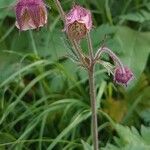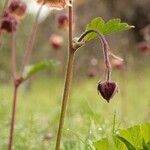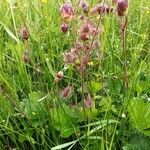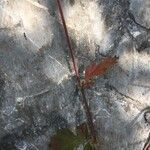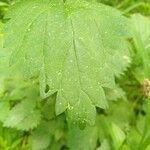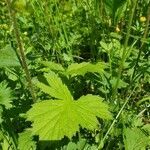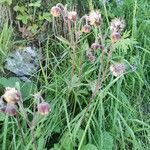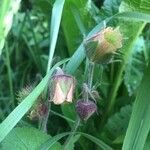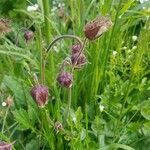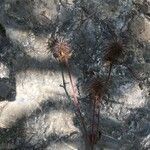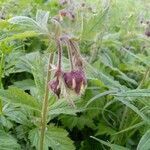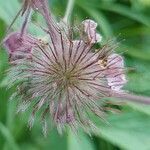Stems 3–6 dm from a short, stout rhizome, sparsely hirsutulous; basal lvs to 3 dm, with 3(5) principal lfls, the terminal one broadly obovate or subrotund, serrate, ± 3-lobed, the others adjacent, narrowly obovate; additional lateral lfls remote and irregular; cauline lvs much smaller, reduced above, variously toothed to divided; fls several, campanulate, nodding, the pedicels eventually elongate; sep purple, ascending or erect, 7–10 mm; bractlets linear, 3–4 mm; pet yellowish, suffused with purple and purple-veined, usually a little shorter than the sep; style at anthesis jointed near the middle, the distal segment plumose, to 8 mm at maturity; achenes spreading, with decurved styles; 2n=42. Swamps and wet meadows; Nf. and Que. to Alta., s. to N.J., Pa., Ind., Mich., and Calif. May– July. G. pulchrum Fernald, with clear yellow pet conspicuously exceeding the sep, has been thought to be a hybrid with G. macrophyllum, but may be merely a form of G. rivale.
Plants leafy-stemmed. Stems 30–85 cm, sparsely downy to scattered-hirsute proximally, downy distally. Leaves: basal 6–40 cm, blade interruptedly pinnate, major leaflets 5–7, mixed with 7–14 minor ones, terminal leaflet slightly larger than major laterals; cauline 2–10 cm, stipules ± free, 7–18 × 5–9 mm, blade pinnate to 3-foliolate. Inflorescences 2–8-flowered. Pedicels densely downy, some hairs glandular. Flowers nodding; epicalyx bractlets 2–4 mm; hypanthium greenish maroon to maroon; sepals erect, 7–10 mm; petals erect, yellow, suffused with purple and purple-veined, spatulate-obovate, 8–10 mm, ± equal to sepals, apex rounded, truncate, or shallowly emarginate. Fruiting tori on 4–10 mm stipes, densely bristly. Fruiting styles geniculate-jointed, proximal segment persistent, 5–9 mm, apex hooked, stipitate-glandular, bristles on basal 1/2, distal segment deciduous, 3–4.5 mm, pilose except apical 1 mm. 2n = 42.
A small herb. It grows 25-30 cm high. It has robust roots. The leaves at the base are harp shaped and with leaflets. They are 10-35 cm long. The leaves are like strawberry leaves. The flowers are dull purplish-pink. Some garden cultivated varieties have been developed.
